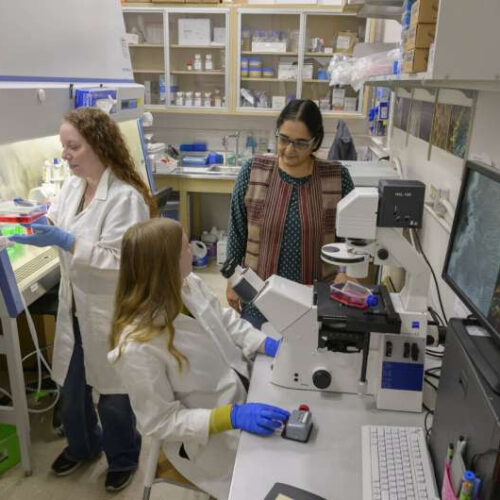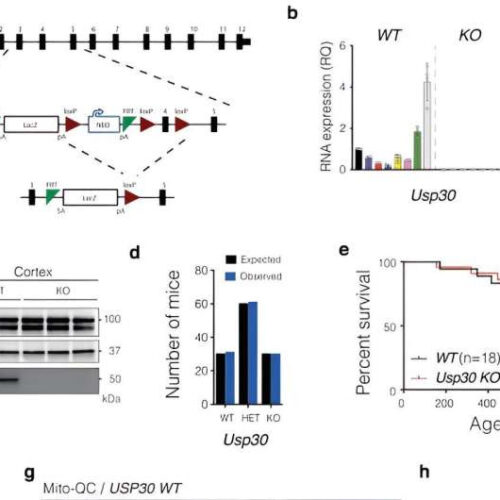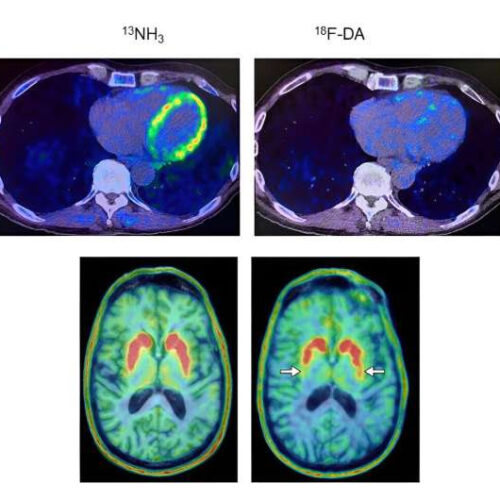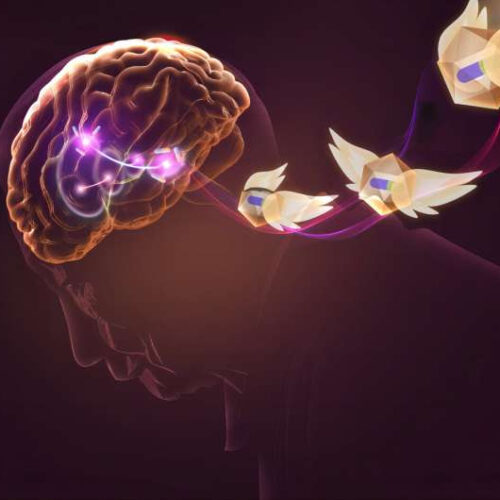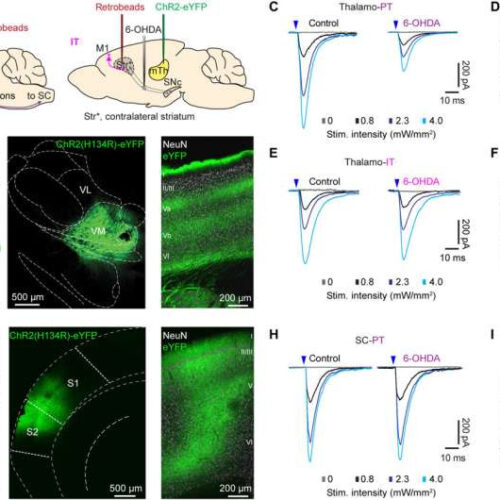by University of Arizona Lalitha Madhavan, MD, PhD, and her research team used induced pluripotent stem cell technology to reprogram adult skin cells into brain cells to study Parkinson’s disease. Credit: University of Arizona Health Sciences A study published in Progress in Neurobiology and led by researchers at the University of Arizona College of Medicine, Tucson,...
Tag: <span>parkinsons</span>
Researchers halt progression of Parkinson’s disease in mouse model
by Jacqueline Mitchell, Beth Israel Deaconess Medical Center Generation and characterization of Usp30 KO mice. a Schematic of gene targeting to generate the Usp30 KO mice. b Bar graph shows the levels of Usp30 gene expression in different tissues in Usp30 WT and KO mice (n = 5 for brain, n = 4 for testis, n = 3 for all other tissues)....
PET scans may predict Parkinson’s disease and Lewy body dementia in at-risk individuals
by Erin Bryant, National Institutes of Health Heart and brain PET scans from a study participant who developed Parkinson’s disease support a “body first” progression. The top pair of PET scans image show low 18F-dopamine-derived radioactivity in the heart (right, with 13N-ammonia PET scan on left). Later, brain scans showed a loss of dopamine-producing neurons and...
In experiment, electrical stimulation of the spinal cord helps a patient with Parkinson’s to walk
By Matthew Herper Marc, a 62-year-old who has had Parkinson’s for 30 years, received an experimental treatment that appeared to notably improve his ability to keep his balance and walk without freezing up. An experimental treatment that delivers an electrical current to the spinal cord appeared to notably improve the ability of a man with Parkinson’s...
The dual role of well-known protein sheds light on Parkinson’s disease mechanisms
by Lisbeth Heilesen, Aarhus University New research from Aarhus University with international collaborations has revealed that natural aSN activates an important calcium pump in the cell membrane. Credit: Antoni Kowalski The protein alpha-synuclein (aSN) has long been known as a main cause in Parkinson’s disease and Lewy Body Dementia, for example, when it forms lumpy protein...
Circuit-specific gene therapy brings new hope for treatment of Parkinson’s disease
by Chinese Academy of Sciences Retrograde AAV selectively targets D1-MSNs and rescues parkinsonian symptoms with chemogenetic modulation. Credit: SIAT Researchers from the Shenzhen Institute of Advanced Technology (SIAT) of the Chinese Academy of Sciences (CAS) and their collaborators have developed a gene therapy strategy to selectively manipulate Parkinson’s disease-affected circuitry and attenuate the core motor symptoms...
When Digestive Symptoms Signal Parkinson’s Disease
Sylvain Beorchia, MD October 20, 2023 The enteric nervous system (ENS), which is regarded as our second brain, is the part of the autonomic nervous system that controls the digestive tract. Housed along the entire length of the digestive tract, it is made up of more than 100 million neurons. It plays a central role in controlling...
Tai chi may slow Parkinson’s symptoms for years, study finds
SOURCE,GETTY IMAGESBy Philippa RoxbyHealth reporterTai chi may help slow down the symptoms of Parkinson’s disease for several years, a Chinese study suggests. Those who practised the martial art twice a week had fewer complications and better quality of life than those who didn’t, the researchers say. Parkinson’s is a progressive brain disease which leads to...
Two sisters’ genetic puzzle leads to potential breakthrough in our understanding of Parkinson’s disease
byEric W. Dolan October 22, 2023 In a groundbreaking discovery published in the journal Neuron, scientists have challenged a long-held belief about the origins of Parkinson’s disease, shedding new light on this debilitating neurological condition. Their research suggests that the malfunctioning of synapses, the tiny gaps that allow neurons to communicate with each other, might...
Repairing broken brain circuits may offer path to new Parkinson’s treatments
by Van Andel Research Institute SNc DA degeneration induces cell subtype–and input-specific alterations in M1.(A) Overall strategies to label projection defined M1 pyramidal neurons and optogentically activate thalamocortical transmission arising from the mTh. (B) Overlaid image showing the averaged AAV injection sites in the motor thalamus (left), as well as representative confocal images showing an...

